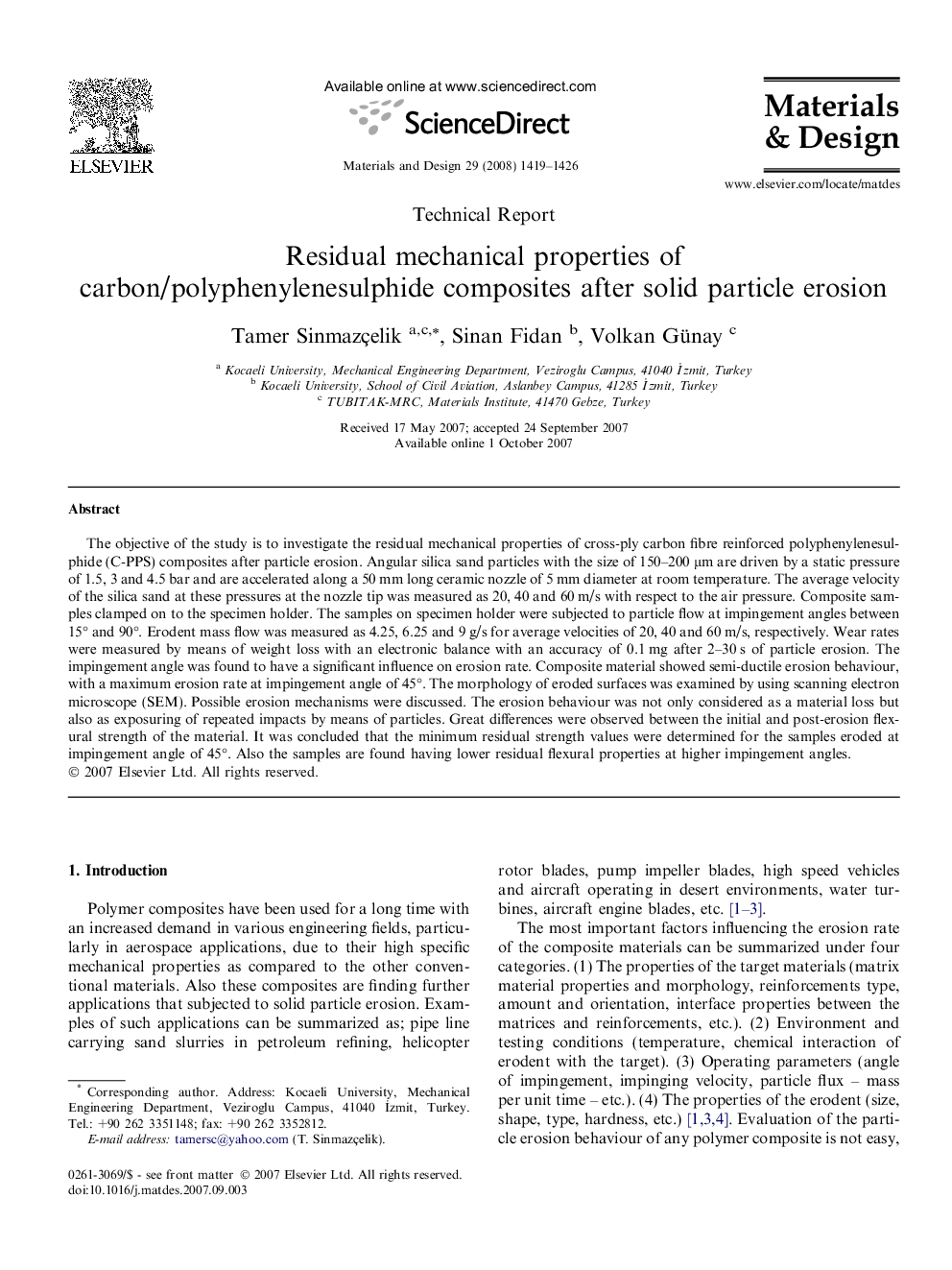| کد مقاله | کد نشریه | سال انتشار | مقاله انگلیسی | نسخه تمام متن |
|---|---|---|---|---|
| 833215 | 908135 | 2008 | 8 صفحه PDF | دانلود رایگان |

The objective of the study is to investigate the residual mechanical properties of cross-ply carbon fibre reinforced polyphenylenesulphide (C-PPS) composites after particle erosion. Angular silica sand particles with the size of 150–200 μm are driven by a static pressure of 1.5, 3 and 4.5 bar and are accelerated along a 50 mm long ceramic nozzle of 5 mm diameter at room temperature. The average velocity of the silica sand at these pressures at the nozzle tip was measured as 20, 40 and 60 m/s with respect to the air pressure. Composite samples clamped on to the specimen holder. The samples on specimen holder were subjected to particle flow at impingement angles between 15° and 90°. Erodent mass flow was measured as 4.25, 6.25 and 9 g/s for average velocities of 20, 40 and 60 m/s, respectively. Wear rates were measured by means of weight loss with an electronic balance with an accuracy of 0.1 mg after 2–30 s of particle erosion. The impingement angle was found to have a significant influence on erosion rate. Composite material showed semi-ductile erosion behaviour, with a maximum erosion rate at impingement angle of 45°. The morphology of eroded surfaces was examined by using scanning electron microscope (SEM). Possible erosion mechanisms were discussed. The erosion behaviour was not only considered as a material loss but also as exposuring of repeated impacts by means of particles. Great differences were observed between the initial and post-erosion flexural strength of the material. It was concluded that the minimum residual strength values were determined for the samples eroded at impingement angle of 45°. Also the samples are found having lower residual flexural properties at higher impingement angles.
Journal: Materials & Design - Volume 29, Issue 7, 2008, Pages 1419–1426